Titanium-sapphireOscillators
Griffin
The KMLabs Griffin™ series of Ti:sapphire oscillators gives customers ultimate control over their system, are simple to maintain, and offer a wide range of performance specifications enabling many different applications. These prism-based oscillators use Kerr lens modelocking to generate ultrashort < 12 fs pulses. All Griffin lasers include computerized control of the spectral bandwidth and center wavelength and water-cooled breadboards for maximum long term stability. There are options within the Griffin series that include integrated pump lasers and diagnostics. Griffin lasers are very simple to maintain, since components are easily accessible.
Features:
- Computer control of bandwidth and central wavelength
- Designed for the needs of scientists
- Pulsewidth down to <12 fs
- Power up to 1.4 W with 80 - 95 MHz repetition rate
- Bandwidth up to 700 - 920 nm
Overview: KMLabs Griffin Datasheet
Halcyon

The KMLabs Halcyon™ repetition-rate stabilized oscillator is popular with customers who need to synchronize oscillator laser pulses with pulses from another laser or with a synchrotron. Electronics included with the Halcyon lock its output to the customer’s reference signal and can provide timing jitter of less than 150 fs. Stabilization of the repetition rate is achieved through multiple features including a temperature-stabilized breadboard, a motorized stage for coarse feedback, and a small piezo-mounted mirror for fast feedback. The KMLabs team works closely with each Halcyon customer to ensure that the system meets their specific needs. Due to the flexible design of the Halcyon™, it can lock to reference signals over a very wide range: 75 MHz to 4 GHz.
Features:
- Computer control of bandwidth and central wavelength
- Pulsewidth down to <12 fs (optional <10 fs)
- Excellent beam quality M² < 1.2
- Power up to >1.4 W
- Configurable repetition rates from 75 - 102 MHz
- Repetition rate locking
- Low jitter <150 fs
Overview: KMLabs Halcyon Datasheet
Stryde
New in 2017, the Stryde™ is KMLabs’ tunable ultrashort-pulsed Ti:Sapphire-based oscillator. It is a fully engineered and integrated commercial source based on a single rugged opto-mechanical platform.
Features:
- Computer control of bandwidth and central wavelength
- Pulsewidth down to <12 fs
- Excellent beam quality M² < 1.2
- Power up to >500 mW
- Maximum pulse energy >6 nJ
- One-box configuration with integrated pumps
Overview: KMLabs Stryde Datasheet
RAEA Titanium-sapphireAmplifiers
New in 2018, RAEA™ tunable femtosecond single box amplifier system is KMLabs’ newest Ti:sapphire-based offering. It is an integrated system built around a commercially-engineered architecture and rugged opto-mechanical platform, providing an unprecedented >20W output from a single box configuration. The high flexibility system allows full power while optimizing energy to your specific experiment, dramatically shortening typical data collection times.
Features:
- Computer-controlled wavelength, bandwidth, power, beam quality and repetition rate tuning
- <35 fs pulses, <25 fs with SP package
- Low pedestal and quality beam with M² < 1.3
- Temperature-stabilized optical platform
- <0.5% RMSpower stability
- <10 µrad RMS pointing stability
- Cryo-cooled amplifier allows both high flexibility and high pulse quality
- Pulse profile rigorously qualidfied using FROG
- Designed and optimized to pump XUUS4 system for high harmonic generation
Overview: KMLabs RAEA
EUV Sources
XUUS
XUUSTM is a coherent source for radiation in the extreme ultraviolet (EUV) or soft X-Ray range. The conversion of the laser is realized by high harmonic generation (HHG) in a patented hollow waveguide.
Features:
- Available Wavelengths: 10 - 47 nm (26 - 124 eV), 4 - 10 nm (124 - 300 eV) and 1 - 10nm (124 - 1000 eV)
- Stability: Power <5 % RMS, Pointing <10µrad over 12 hours
- Repetition rates between 1kHz and 100kHz possible
- Highly coherent, laser like radition with a stable wavefront
- Photon flux >5*1012/s in the EUV possible
- Minimized gas usage
Download: XUUS Datasheet
An interesting article about using the XUUS for EUV microscopy can be found on the Photonicsviews magazine.
Pantheon

KMLabs Pantheon™ platform is a pulsed EUV source, consisting of the necessary
instrumentation for the generation of EUV light as well as a beamline to facilitate delivery of pure EUV photons to your user-supplied experimental station. Individual pulses of light from Pantheon have duration in the femtosecond regime and take the form of a laser-like, coherent, and highly focusable beam.
From nanoscale imaging to ultrafast magnetization dynamics, photoemission spectroscopy, and semiconductor lithography, a multitude of materials and technologies have characteristic energy or transitions that fall in this critical range. Harnessing the power of this portion of the spectrum is now possible in a laboratory setting for scientists who want to focus on the experiment rather than the light source.
Generation of EUV photons is accomplished by the high harmonic generation process, using an ultrafast 800 nm beam as the fundamental light source. Downstream of the high harmonic process, Pantheon includes the necessary optics to remove the fundamental light from the propagating beam, leaving only the converted EUV light for the experiment. However, excess fundamental light can also be directed down an alternative beam path(s) to use in a separate experiment, or to facilitate IR/EUV pump-probe measurements.
Benefits:
- Commercially engineered, tunable EUV light
- EUV light source with laser-like spatial and temporal coherent pulses
- Easy to use pure EUV light ready for your experiment
- Impeccable stability
Quantum Microscope
Non-destructive. No sample prep. Completing your correlative suite.
KMLabs QM Quantum MicroscopeTM advanced photon imaging solution is a fully integrated, commercialized platform enabling ultrafast spectroscopy in the EUV range and high-contrast, near surface-to-subsurface imaging at the nanoscale. It enables laboratory-based 2D high contrast imaging of composition and structure, study of mechanical properties of patterned films, deep understanding of materials properties, and functional characterization of spintronic, ALD, 2D, low-density lightweight, energy, space and photovoltaic materials.
A suite of integrated systems developed to elucidate critical details of critical technology problems.
By combining the time sensitivity of femtosecond lasers with the spatial resolution of EUV microscopy and diffraction, QM enables a series of techniques tuned for important challenges in research and industry. E.g., for batteries, EUV absorption near the lithium edge provides a microscopic and spectroscopically rich area to understand lithium bonding. For semiconductors, QM provides critical detail on buried and surface nanotopography with unique sensitivity to bonding.
Completely configurable, the QM Quantum Microscope comprises a laser source (EUV and/or VUV), amplifier, beamline tailored to the user’s experiment, and imaging or other analysis workstations that can effectively cover the microscopy/spectroscopy landscape for nano-to-quantum materials.

QM Quantum Microscope benefits
- Non-destructive imaging brings time-resolved research to nanometer length scales
- Uniquely capable of topographical surface imaging (biological, semiconductor, quantum)
- One or more beamlines with endstations can be configured to your requirements
- Diffraction for nanometer-scale order in self-assembled materials
- Structural pump probe for mechanical and thin-film property evaluation to understand elasticity response, thermal transport, and phonon modes
- High resolution, revolutionary measurement of magnetic systems is highly sensitive to different magnetic layers
Applications in development*
- Coherent diffraction imaging (CDI)
- Pump probe spectroscopy
- Magnetic dynamics
- ARPES
- MOKE diffraction and magnetic imaging
- Reflectometry
- Magnetic imaging at band edge
- IR pump/EUV probe diffraction imaging for thermomechanical and elastic data
- High speed spin transport dynamics
Features that lead to important benefits
- Integrated, high performance ultrafast EUV laser source
- High resolution interferometric surface and subsurface imaging
- x/y spatial resolution to <20 nm
- Multiuse beamline with configurable endstations
- Pump probe (XUV pump/IR probe) designs
- Extensible to VUV (60 - 150 nm or 8.3 to 20.7 eV)
HyperionVUV
KMLabs Hyperion VUV, a 2019 Laser Focus World Platinum-level Innovators Award and an R&D 100 Awards Finalist, provides bright femtosecond pulses at numerous wavelengths across the vacuum ultraviolet (VUV) region, from 6.0 eV (205 nm) to 10.8 eV (115 nm). The discrete tunability of the KMLabs Hyperion VUVTM vacuum ultraviolet source enables researchers to study a wide range of materials and materials properties. A simple computer-selected change of photon energy provides a powerful capability, previously only available at a synchrotron; this ability to easily change the laser wavelength can enhance many experiments. For example, in angle-resolved photoemission (ARPES) experiments, this tunability allows researchers to distinguish surface effects from bulk effects. For time-of-flight (ToF) studies of molecules, the tunability can distinguish otherwise identical isomers.
Hyperion VUV is also highly focusable, and the appropriate optics can be used to reach spot sizes below 10 microns. This ability will allow researchers to examine new types of samples, including materials that are polycrystalline, spatially inhomogeneous, faceted, or simply very small.
Hyperion VUV produces pulses with durations below 250 femtoseconds, enabling scientists to probe ultrafast dynamics of molecules and materials. The 1 MHz repetition rate enables rapid data collection and avoids space-charge effects.
Additionally, Hyperion VUV is “application ready,” including the appropriate focusing and beam-steering elements to enable fast integration with experimental apparatus. Importantly, Hyperion VUV can be used with a window between the source and the experimental chamber, guaranteeing that applications demanding ultrahigh vacuum (such as ARPES) will remain contamination-free.
In addition to ARPES, Hyperion VUV will enable breakthrough research in photoemission electron microscopy (PEEM), photoionization mass spectroscopy (PIMS) for combustion research, and other studies of next-generation materials and molecular systems.
Features that lead to significant benefits:
- Tunable (computer-selected) photon energy between 6–10.8 eV enhances capabilities for laser ARPES experiments:
- Achieve high momentum resolution using low energy photons (< 7 eV) and still cover higher momentum range using higher energy photons (> 10 eV)
- Obtain surface vs. bulk information
- Reveal "hidden bands" by changing wavelength
- Bandwidth is adjustable to optimize data collection
- Tight focal spot provides greater sample flexibility, allowing the study of
- Extremely small samples
- Spatially heterogeneous samples
- Polycrystalline materials
- A window provides complete isolation between Hyperion VUV and the experimental chamber, maintaining high vacuum
- Femtosecond pulses enable time-resolved experiments
- Hyperion VUV measures only 2.5 feet x 5 feet, bringing the power of the synchrotron to your lab
Download: Hyperion VUV Data Sheet












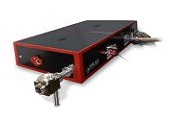
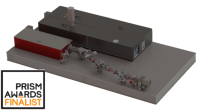


















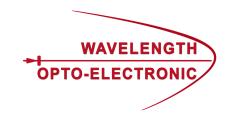


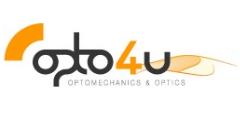


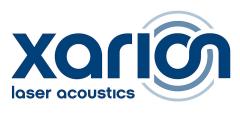

 Optoprim France
Optoprim France Optoprim Italy
Optoprim Italy